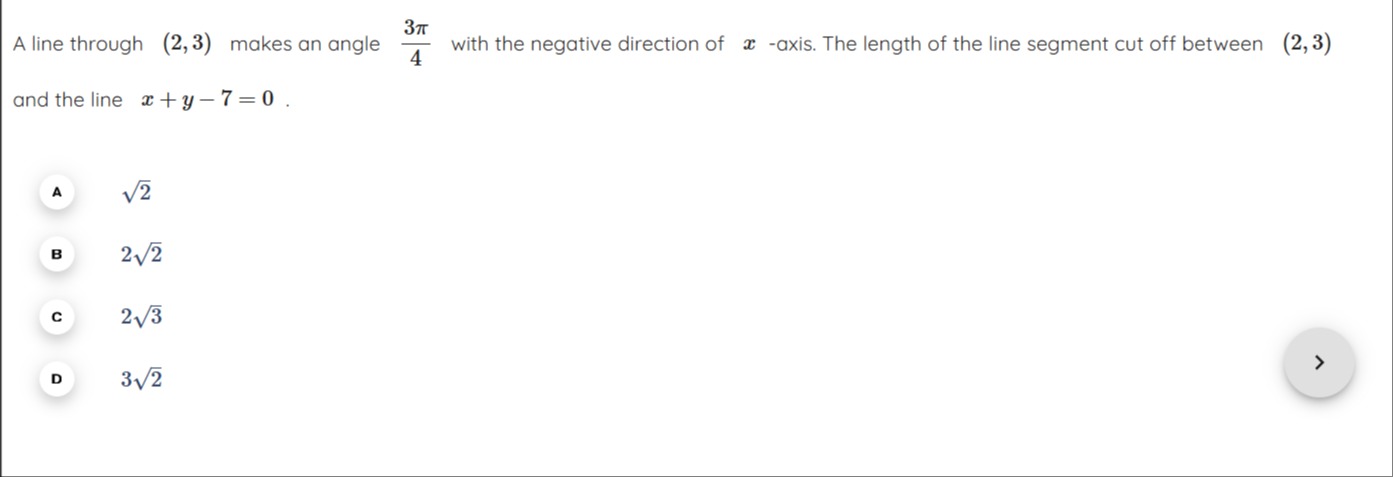Question
Question: A line through (2,3) makes an angle $\frac{3\pi}{4}$ with the negative direction of $x$ -axis. The l...
A line through (2,3) makes an angle 43π with the negative direction of x -axis. The length of the line segment cut off between (2,3) and the line x+y−7=0.

2
22
23
32
2
Solution
Let the line passing through P(2,3) be L1. The angle it makes with the negative x-axis is 43π. Let θ be the angle L1 makes with the positive x-axis. The angle of the negative x-axis is π. The angle between L1 and the negative x-axis is ∣θ−π∣. So, ∣θ−π∣=43π. This gives two possibilities:
- θ−π=43π⟹θ=π+43π=47π. The slope is m=tan(47π)=−1.
- θ−π=−43π⟹θ=π−43π=4π. The slope is m=tan(4π)=1.
The second line is L2:x+y−7=0. Its slope is m2=−1.
If the slope of L1 were −1, then L1 would be parallel to L2. The equation of L1 would be y−3=−1(x−2)⟹x+y−5=0. This line is parallel to x+y−7=0, and no finite line segment would be cut off. Therefore, the slope of L1 must be 1, and θ=4π.
We use the parametric form of the line L1 passing through (x0,y0)=(2,3) with an angle θ=4π and distance r: x=x0+rcosθ=2+rcos(4π)=2+r21 y=y0+rsinθ=3+rsin(4π)=3+r21
Substitute these into the equation of L2:x+y−7=0: (2+r21)+(3+r21)−7=0 5+22r−7=0 5+r2−7=0 r2−2=0 r2=2 r=22=2
The value of r represents the length of the line segment cut off between the point (2,3) and the line x+y−7=0. The length of the segment is 2.
